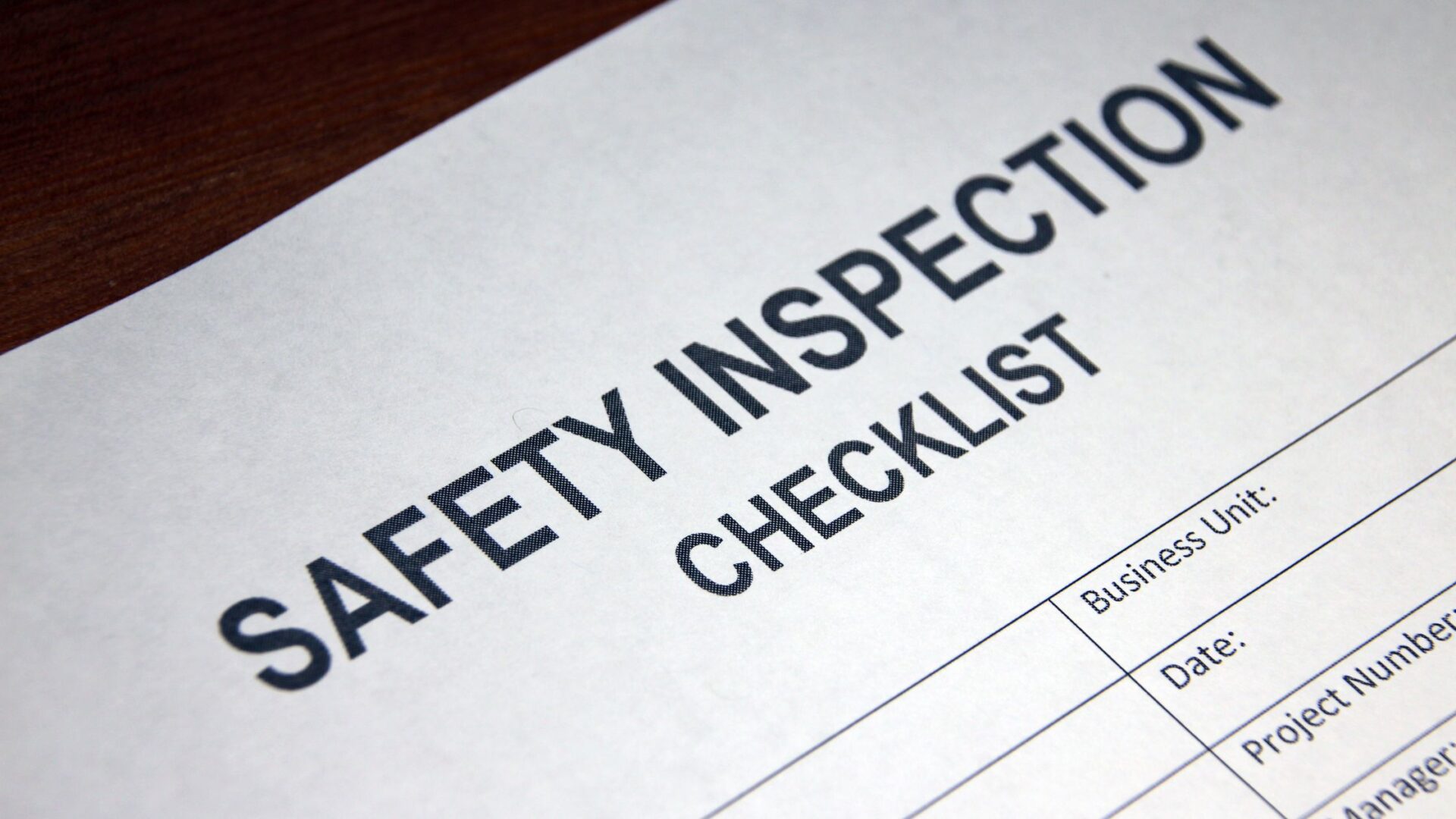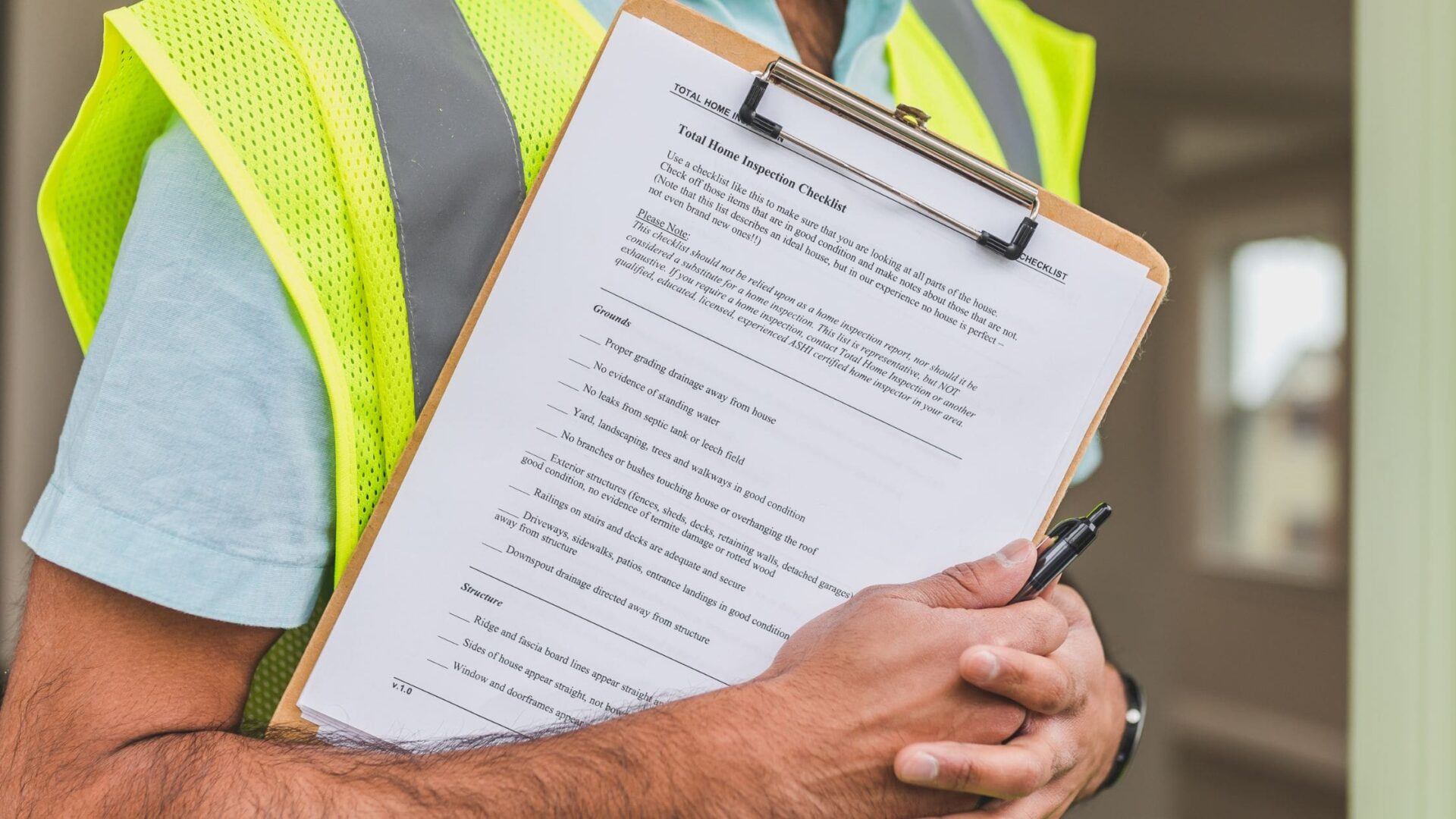Third-party inspections are vital for industries such as manufacturing, construction, food processing, and eCommerce.
These inspections are the backbone of ensuring top-notch product quality and safeguarding consumer safety. When businesses work with independent inspection agencies, they get the peace of mind that their products meet industry standards and legal requirements before hitting the shelves.
Accreditation, like ISO 17020, guarantees that these agencies are not just qualified but impartial in their assessments. Whether it’s a factory audit or a product inspection, the goal is to catch potential issues early, saving businesses from costly mistakes later.
The key to a successful inspection process? Choosing the right inspection provider. A trusted partner ensures quality control and helps minimize risks, setting you up for success.
In this article, we’ll focus on the importance of third-party inspections, how to select the right provider to conduct inspections, and how they can positively impact your business.
What is a Third-Party Inspection?

A third-party inspection involves an independent entity that evaluates product quality, safety, or processes. Unlike first-party inspections (the initial inspection where the manufacturer conducts the check) or second-party inspections (where the buyer oversees the check), third-party inspections are the final inspections to remove any potential bias or conflicts of interest. This impartiality ensures that evaluations are based purely on facts and compliance with relevant standards.
These independent inspection agencies may adhere to recognized industry standards, such as ISO 9001 for quality management or ISO 14000 for environmental impact assessments. In addition, they may provide specialized social responsibility audits (e.g., SA 8000) to address labor and ethical concerns.
The key advantage of third-party inspections is the absence of any financial interest in the transaction, resulting in an unbiased and trustworthy evaluation. Agencies that are “Category A” inspection bodies per ISO 17020 specialize solely in inspection and testing, ensuring the highest level of impartiality. These quality assurance processes verify whether products conform to international manufacturing standards, which helps businesses ensure quality and avoid compliance issues.
Why are Third-Party Inspections Important?
Third-party inspections (TPI) are necessary in ensuring product quality and safety across various industries, including manufacturing, construction, and eCommerce. By hiring an independent inspection agency, businesses can objectively verify that products meet industry standards and regulatory requirements before reaching the market. This impartial evaluation helps identify potential defects, ensuring that all high-quality goods meet customer expectations.
One of the primary benefits of TPI is cost-saving. Identifying production flaws early on reduces the risk of costly product recalls, minimizes risks related to non-compliance, and helps businesses avoid disruptions caused by defective products. This is particularly important in industries where precision and high tolerances are vital, such as electronics or industrial equipment manufacturing.
Moreover, regular third-party checks verify compliance, maintain consistent quality, safeguarding brand reputation. They also provide neutral reports that can resolve disputes between buyers and suppliers, preventing costly legal issues. In the long run, implementing third-party inspections builds stronger buyer-supplier relationships and ensures the reliability of products in the market.
Unbiased Perspectives
Third-party inspections provide an impartial assessment, free from the internal biases that may affect first-party (manufacturer-conducted) or second-party (buyer-conducted) evaluations. An independent inspection agency ensures that all decisions are based purely on factual evidence and adherence to industry standards, rather than business interests or shareholder pressures.
Impartiality is especially important in regulated sectors, where third-party inspections may be required by law to validate product compliance with safety, quality, and environmental standards. For instance, in sectors such as medical device manufacturing, impartial inspections ensure products meet strict regulatory guidelines.
The findings of third-party inspectors are typically accompanied by detailed statistics on defect rates, production quality, and potential risks. By providing objective data, these reports minimize the chance of conflicts between buyers and suppliers, fostering trust and ensuring clear communication. This is vital in ensuring that the production process aligns with agreed-upon quality standards and contractual terms. The unbiased perspective also helps companies address deficiencies before they escalate into major problems.
Specialized Knowledge
Third-party inspectors bring specialized expertise to ensure that products meet high industry standards. Many inspection agencies train their inspectors in specific product categories and certifications, such as ISO 9001 for quality management or industry-specific frameworks. This training equips inspectors with the skills needed to assess products with precision, identifying any defects or inconsistencies early in the production process.
For example, inspectors often perform tensile strength testing, functional checks, and sampling protocols, each critical in verifying that materials and products meet required specifications. Their expertise extends beyond just quality control; it includes a deep understanding of regulatory frameworks in multiple regions, which is essential for smooth global supply chain operations. This expertise ensures that products not only meet internal quality standards but also comply with international laws and environmental regulations.
Skilled third-party inspectors can spot substandard raw materials or identify issues with production methods that might lead to significant failures in the final product. By doing so, they provide businesses with valuable insights that can enhance both productivity and manufacturing efficiency.
Instilling Confidence in Customers
Third-party inspection validation can significantly boost consumer trust and confidence in your products. By partnering with reputable inspection agencies, companies can showcase their commitment to maintaining high-quality standards. When a product passes an inspection, particularly one that adheres to international quality standards such as ISO, it sends a powerful message to customers about reliability and safety.
In industries like eCommerce, where international buyers might hesitate due to concerns about product quality, third-party inspection reports offer a strong reassurance. Products with recognized compliance seals or certifications typically see increased consumer loyalty, resulting in repeat business and positive word-of-mouth referrals. For example, when buyers know that a third-party inspection has verified the product quality, it reduces the perceived risk of making a purchase, thereby increasing their confidence in the brand.
Moreover, positive inspection results provide companies with tangible proof of their commitment to quality, which can be used in marketing materials. This transparency in quality control reinforces brand reputation, leading to stronger relationships with clients and suppliers alike.
Meeting Legal or Regulatory Requirements
Third-party inspections (TPI) are often essential for meeting legal and regulatory requirements across various industries. In some regions, companies cannot obtain an operating license or permit without passing an external audit by a recognized inspection agency. For example, industries like medical device manufacturing, amusement, and construction may be required by law to undergo third-party inspections on a regular basis to ensure that products meet established safety and quality standards.
Failing to comply with these requirements can result in significant penalties, such as halted operations, revoked licenses, or heavy fines. To avoid these risks, many companies rely on third-party inspections to confirm compliance with both local and international regulations. Insurance carriers may also request third-party inspection reports to mitigate risks and lower underwriting costs, as these reports demonstrate a commitment to safety and product quality.
In specific sectors, such as children’s products, regulatory bodies mandate that third-party inspections be conducted to meet stringent safety regulations. Accreditation from bodies like ISO 17020 validates the inspection agency’s ability to conduct thorough and impartial evaluations, further ensuring compliance with industry standards.
Elevating Industry Standards
Third-party inspections play a crucial role in raising the overall quality of products and services within an industry. Regular external inspections encourage companies to refine their processes, adopt new safety measures, and update internal protocols. By addressing non-conformities identified through unbiased evaluations, businesses can significantly improve their quality management systems and better align with industry standards.
This process has a ripple effect: as more businesses implement third-party inspections, the overall quality within the industry improves. Third-party inspectors often bring knowledge from various sectors, sharing insights that foster innovation and product excellence. Their cross-industry experience helps identify emerging trends or recurring defects, prompting businesses to adopt new technologies, materials, and best practices.
When Is Third-Party Inspection Most Beneficial?
Third-party inspections (TPI) are especially valuable in scenarios where internal resources might not be sufficient to ensure product quality or regulatory compliance. This is particularly true when dealing with new suppliers or complex supply chains. If you’re sourcing from unfamiliar regions or vendors with unverified track records, a third-party inspection provides the reassurance that your products meet the necessary quality standards before they reach the market.
For high-risk products, such as premium items or intricate industrial machinery, where defects can be costly to repair post-shipment, TPI is invaluable. These inspections help identify defects early, preventing costly repairs or product recalls. Additionally, when businesses face repeated quality issues, a specialized external audit can often pinpoint the root causes more effectively than internal teams, providing actionable insights to fix ongoing problems.
Third-party inspections also play a critical role during various stages of production. Early-stage (pre-production) inspections help detect issues with raw materials or production lines before large-scale manufacturing begins, reducing the risk of significant defects. During the production process, middle-stage inspections help catch any deviations or issues that can be corrected without disrupting the overall production flow, ensuring product quality remains intact.
What are the Main Steps and Types of a Third-Party Inspection?
The process of third-party inspection follows several important steps to ensure product quality and compliance with industry standards. The first step begins with the initial planning phase, where the inspection company and the client agree on the scope of the inspection. This typically includes reviewing product specifications, deciding on inspection procedures, and finalizing costs and timelines.
Once the contract is in place, the inspection agency performs an on-site evaluation, which may involve visual checks, mechanical or chemical tests, and sampling procedures, depending on the product type. For example, random sampling is often used during pre-shipment checks to ensure unbiased quality measurements, and AQL (Acceptable Quality Limit) standards are applied to categorize defects as minor, major, or critical.
Finally, the inspection agency compiles a detailed inspection report, documenting any findings and providing recommendations for corrective actions. This report helps the client make informed decisions about product acceptance, rejection, or further action to resolve any issues before shipment.
Pre-Inspection Preparation
The pre-inspection preparation stage is critical for ensuring a smooth and efficient inspection process. It begins with the review of all relevant documentation, including design specifications, certifications, and previous internal audits, which help set clear expectations and guidelines for the inspection. Product specifications and regulatory standards, such as ISO or industry-specific requirements, are also closely examined during this phase to ensure compliance with necessary quality control measures.
Along with documentation, the inspection agency will review the sampling plan, confirming that it aligns with the production status (e.g., 80% completion) to optimize the timing for sampling. Logistical planning is also an essential part of pre-inspection, ensuring that the factory location, timing, and necessary equipment for the inspection are in place to avoid delays.
By confirming that the factory and production processes are prepared for inspection, third-party inspectors can focus on assessing the actual product quality without interruptions. Ensuring that all raw materials, tools, and test methods are ready and meet quality management system standards can significantly streamline the inspection process, leading to more accurate and efficient results.
On-Site Inspection Procedures
During on-site inspections, inspectors perform a variety of tasks to ensure product quality and compliance with relevant standards. The inspection process typically begins with visual checks, where inspectors look for any obvious defects or discrepancies in the product, packaging, and labeling. These checks ensure that products meet the required specifications and that packaging integrity is maintained to prevent damage during transport.
Inspectors may also conduct functional operations tests, assessing whether products perform as intended. For example, in industries like construction or manufacturing, equipment may undergo tests for structural integrity or functionality. In addition, inspectors often use precise tools such as tension gauges, measurement instruments, or go/no-go testers to conduct more technical evaluations.
Sampling methods are also a key part of on-site inspections. These methods often follow Acceptable Quality Limit (AQL) standards, which determine the percentage of units to be checked from each production batch. This ensures that the sample accurately reflects the overall product quality. Additionally, inspectors document their findings through photographs, checklists, and real-time data recording to ensure transparency and clarity in reporting.
For container loading inspections, a “drop test” is sometimes performed on cartons to assess their durability under transit conditions, which is particularly important for eCommerce businesses. Ensuring barcodes are correctly scanned and shipping marks are placed properly is also vital for compliance.
Post-Inspection Reporting
Once the on-site inspection is complete, the next step is to document and share the inspection results. The inspection report plays a crucial role in communicating findings clearly and concisely, ensuring that all parties involved can take the necessary actions. Reports typically include defect classifications (critical, major, or minor) along with clear reference photos to illustrate any issues found. This visual documentation enhances the clarity and reliability of the inspection results.
The summary section of the report presents a pass/fail conclusion, along with recommended corrective actions, if necessary. In some cases, the report may include compliance certificates to validate that the product meets the required standards, such as ISO certifications or other industry-specific requirements.
Timely delivery of the report is essential for businesses to make informed decisions quickly. Inspection agencies often aim to provide detailed reports within a few days, enabling companies to resolve any issues promptly and avoid production delays. In many cases, digital platforms are used to streamline the report-sharing process, allowing real-time collaboration between buyers, suppliers, and inspection agencies.
Resolving Non-Conformities
When issues are uncovered during a third-party inspection, addressing them promptly is crucial to maintaining quality and compliance. The first step in resolving non-conformities is to communicate clearly with the inspection agency, production teams, and quality control staff. Collaboration ensures that all parties understand the issues and can take swift action to implement corrective measures.
One of the most effective ways to resolve non-conformities is by documenting corrective actions with specific timelines. This ensures accountability and helps prevent the recurrence of similar defects in future production runs. For example, if a product fails to meet certain specifications, adjustments in the production process or materials might be necessary. Once corrective actions are taken, some jurisdictions require re-inspection by the same third-party agency to verify that the issues have been fully addressed.
Approval or rejection of a shipment often hinges on whether the agreed-upon corrective measures have been successfully implemented. Timely and accurate follow-up ensures that improvements remain effective and that product quality aligns with industry standards. This process helps maintain the integrity of the product and the manufacturer’s reputation, preventing costly delays or returns.
Pre-Production Inspection
Pre-production inspections are crucial in identifying potential issues before full-scale manufacturing begins. During this early-stage inspection, third-party inspectors examine raw materials, components, and the factory’s production setup. This stage is especially important for high-value materials or complex assemblies, as early detection of defects can prevent large-scale production failures.
One key aspect of pre-production inspections is verifying that raw materials meet the required specifications. For instance, if the materials don’t meet industry standards or customer requirements, adjustments can be made before the production process begins. Inspectors also assess the factory’s readiness, confirming that machinery, tooling, and the workforce are prepared for mass production. This helps ensure that the manufacturing process runs smoothly without delays or disruptions.
By catching issues early, pre-production inspections allow businesses to make changes to production plans or materials without incurring significant cost implications. If major issues are identified, buyers have the option to renegotiate terms or adjust their orders accordingly.
During Production Inspection
During production inspections are a vital step in ensuring product quality while manufacturing is still ongoing. Typically conducted when about 20-50% of the order is complete, this inspection provides valuable insights into the production process, allowing you to catch potential defects early before they escalate into larger, more costly problems. Inspectors look for deviations from quality standards, including any changes in color, size, or structural integrity that may affect the final product.
One key aspect of this inspection stage is identifying any unauthorized material substitutions or changes in the production process that could compromise the quality of the product. Inspectors ensure that every material used is in line with the original specifications, and that no unapproved adjustments have been made. By catching these issues early, businesses can address them immediately, minimizing the risk of large-scale errors later in the production cycle.
Ongoing checks during this stage help maintain consistent quality, reduce the risk of defects, and ensure that products align with both customer specifications and industry standards. These inspections also provide valuable data that can be used to make adjustments and improvements in the production process before final assembly or shipment, ensuring smooth operations and timely delivery.
Pre-Shipment Inspection
Pre-shipment inspections are one of the most common stages of third-party inspections, typically conducted when approximately 80% or more of the order is complete. This inspection focuses on reviewing the final product quality, packaging, and labeling before the goods are dispatched to the buyer. It helps ensure that products meet the agreed-upon specifications and are prepared for shipment according to the buyer’s requirements.
One important task during pre-shipment inspection is verifying the accuracy and consistency of the labeling, ensuring that the product description, serial numbers, and compliance certifications are correctly displayed. Inspectors also check the quantity and integrity of the goods, confirming that the order matches the agreed-upon specifications and that packaging is secure and suitable for transit.
A random sampling method is often used in pre-shipment inspections, typically involving around 8% of the total batch. This sample is carefully tested to represent the quality of the entire shipment. Any issues identified at this point can still be addressed, but significant defects may cause shipment delays or potential rework. This final check is essential for reducing the likelihood of returns or dissatisfaction, safeguarding your brand reputation, and maintaining high-quality standards.
Container Loading Supervision
Container loading supervision is a critical aspect of third-party inspections, especially when shipping goods internationally. The primary goal is to ensure that the products are securely packed and loaded to prevent damage during transit. Inspectors verify that the packaging is strong enough to withstand the stresses of transportation and that the stacking methods follow industry standards for safety and efficiency. Proper labeling and carton orientation are also checked to reduce mishandling risks.
Before loading, the inspector assesses the container’s condition—checking for cleanliness, dryness, and structural integrity. A well-maintained container ensures that products aren’t exposed to environmental hazards like moisture, dirt, or contaminants that could compromise quality.
Another key task is matching the packing list with the actual items being loaded. Any discrepancies, such as missing or extra products, are noted to avoid incorrect shipments. By addressing these issues during the loading process, you reduce the risk of errors that could lead to delays, returns, or customer dissatisfaction.
Factory Audit and Inspection
Factory audits and inspections are an essential part of ensuring that manufacturing facilities meet both operational and regulatory standards.
During a factory audit, the inspection agency evaluates the facility’s organizational structure, its adherence to industry standards, and the presence of any internal quality control measures. These audits often include verifying the facility’s certifications, such as ISO 9001, which validate that the company operates within international quality management system standards.
Auditors also assess the company’s commitment to worker safety by inspecting their adherence to safety protocols and local labor laws. Effective internal record-keeping is another crucial component of the audit, ensuring that all processes are documented and consistent with manufacturing guidelines. Auditors also review equipment and operational efficiency to make sure that machinery is in proper working order and capable of meeting production demands without risking product defects or delays.
Other Specialized Inspections
Specialized third-party inspections address specific needs that go beyond general product quality checks. These services often focus on critical areas such as environmental audits, supplier evaluations, and facility inspections. For instance, in industries with stringent environmental or social responsibility regulations, an inspection agency may conduct an environmental audit. This could involve assessing the carbon footprint of a facility, ensuring that wastewater handling practices comply with local laws, or verifying the effectiveness of emission control systems.
In highly regulated sectors, such as medical devices or heavy machinery manufacturing, more specialized inspections are essential to ensure compliance with both industry-specific standards and broader quality standards. For example, third-party inspectors may perform advanced lab tests to identify chemical or microbiological hazards in food, cosmetics, or pharmaceuticals.
These audits provide valuable insights into the manufacturing process, ensuring that every aspect of production meets the necessary regulatory requirements. In sectors like the aerial adventure industry, safety checks during inspections are critical to ensure that equipment and practices adhere to safety standards. As businesses grow, these specialized inspections offer a layer of protection against potential risks and liabilities, while promoting compliance with global standards.
How Do Third-Party Inspections Compare to In-House Inspections?
Third-party inspections and in-house inspections each have their advantages and drawbacks, making them suitable for different business needs. In-house inspections are conducted by internal staff familiar with the company’s processes and culture. They understand the nuances of your operations but may lack the objectivity that third-party agencies can provide. Internal inspectors may also have limitations in specialized expertise, especially for industries with complex or highly technical products.
On the other hand, third-party inspection companies bring impartiality and a broader perspective. External inspectors rotate through multiple industries and factories, providing valuable insights into common pitfalls and emerging trends. Their ability to spot recurring issues is especially useful for companies with complex or international supply chains. Third-party inspectors often work based on standardized methods, ensuring that their results align with industry norms and regulatory requirements, which in-house teams might overlook.
The cost structures for these two options also differ. Third-party inspections are typically billed by the “man-day,” offering flexibility and scalability. This can be an affordable option for companies with fluctuating needs. In-house teams, however, involve fixed costs for salaries, training, and overhead, which may be less economical for smaller operations or those with less frequent inspection needs.
Scalability
External inspections are highly beneficial when managing fluctuations in production volume or handling multiple production sites. Third-party providers can rapidly deploy inspectors to various locations, whether for peak production seasons or large orders placed in distant regions. This flexibility reduces the burden on in-house resources, which might struggle with scalability, especially during periods of heightened demand.
The “man-day” pricing model also makes third-party inspections more adaptable. You only pay for the inspection hours required, making it cost-effective and efficient when you need to scale operations up or down quickly. In contrast, in-house teams require permanent staffing and incur ongoing costs, which might be less efficient for businesses experiencing sudden growth or expansion.
Expertise Variations
When comparing in-house inspections to third-party inspections, one of the key differences lies in expertise. In-house teams are typically familiar with the company’s processes and products, but they may not have specialized knowledge in every area of inspection. On the other hand, third-party inspection agencies bring a wealth of diverse expertise. Inspectors from external agencies are often trained across a variety of industries, ensuring that they are up to date with the latest regulations, technologies, and compliance requirements. This broad experience allows them to identify defects or inefficiencies more quickly, leveraging insights gained from inspecting a wide range of products and factories.
These external experts often specialize in advanced testing protocols or product-specific compliance frameworks, such as ISO or industry-specific standards. Their familiarity with common defects and recurring trends across different manufacturing processes can provide valuable input, helping your in-house team adopt best practices and improve efficiency.
In-house teams may be highly skilled in the company’s specific processes, but they might lack exposure to the broader industry landscape and the latest technologies, which is where third-party inspectors shine. Their objective, expert insights can significantly enhance product quality.
Cost Implications
The cost implications of in-house inspections versus third-party inspections can vary significantly. While third-party inspection agencies charge a fee for their services, this cost is often outweighed by the potential savings. For example, the expense of a faulty shipment or a product recall can be much higher than the cost of hiring an inspection agency to ensure quality control upfront.
Third-party inspections are also typically more scalable and cost-efficient for smaller businesses or those with fluctuating inspection needs. With a “man-day” pricing model, companies can choose the level of inspection services they need, allowing for flexibility and reducing unnecessary overhead costs. This can be especially helpful when dealing with larger orders or when working with suppliers located in multiple regions.
In contrast, in-house inspections require ongoing investment in training, salaries, and equipment, which may not be as cost-effective for smaller companies or during times of fluctuating production volumes. While larger companies may find in-house inspections more economical over time, smaller businesses benefit from outsourcing inspections to third-party providers, accessing high-level expertise without the need for a dedicated inspection team.
What are the Key Insights from a Third-Party Inspection Report?
A third-party inspection report is a comprehensive document that provides essential insights into product quality and compliance. Typically, these reports contain a combination of narratives, checklists, defect counts, and photographic evidence. The inspection findings are clearly categorized, with defects often classified by severity (critical, major, or minor) according to the AQL (Acceptable Quality Limit) standards. This helps businesses easily assess the seriousness of any issues found.
These reports serve as vital tools for decision-making. Companies use them to finalize product acceptance, negotiate improvements with suppliers, or address discrepancies in product batches. The inclusion of clear, detailed photos and sometimes videos adds clarity, especially when verifying factory conditions or packaging adequacy. This enables businesses to take immediate action or implement corrective measures to ensure that future shipments meet the required quality standards. In some cases, third-party reports may even offer suggestions for process improvements, further aiding businesses in maintaining high-quality outputs.
Core Findings and Measurements
Third-party inspection reports often present critical quantitative results that help businesses understand product compliance with precise specifications. Defect classification, such as critical, major, or minor, typically follows international standards and helps companies determine how severe any identified issues are. Measurement results—such as dimensional variances or functionality testing—are often detailed with specific tolerances, ensuring products meet required operational standards.
Reports may include spreadsheets or tables that outline any variances from expected tolerances. These tables are essential for businesses to assess the degree of deviation and decide whether immediate corrective action is necessary. If measurements or defects fall outside the specified acceptance limits, it can trigger rework or even rejection of the batch, preventing defective products from reaching the market.
Compliance Checklists
Compliance checklists are integral to third-party inspection reports, as they ensure that all necessary regulatory and quality standards are met. These checklists often reference industry-specific guidelines, such as ISO certifications, social responsibility standards, and local or regional safety codes. They serve as a structured framework for inspectors to evaluate the product’s conformity to these standards.
The use of uniform checklists also helps inspectors maintain consistency and ensure that no critical components—such as electrical safety markings or proper labeling—are overlooked. By referencing these checklists, companies can streamline follow-up actions in case any discrepancies are found. Whether addressing labeling errors or incorrect material choices, these detailed lists simplify the process of identifying non-compliance issues and initiating corrective measures.
Follow-Up Actions
After a third-party inspection, businesses must take prompt and effective actions to address the issues identified. A structured improvement plan is vital to ensure that any defects or compliance issues are corrected. This plan should include clear timelines, assigned responsibilities, and, in some cases, re-inspection requirements if the defects were significant.
Documenting corrective actions helps maintain long-term accountability and ensures that the company can track progress. In cases of persistent issues, businesses may request partial re-inspections, focusing on specific areas where defects were most prevalent. Encouraging manufacturers to provide evidence of corrective work, such as photos or updated logs, can expedite approval from the buyer before shipment.
Sample Inspection Report
A typical third-party inspection report follows a structured format, ensuring clarity and consistency. Here’s an illustrative example:
- Scope: Inspection conducted on Batch #12345 of ABC Electronics.
- Sampling Plan: 10% of total batch inspected (100 units).
- Inspection Criteria: Compliance with ISO 9001, safety labeling standards, and visual quality checks.
- Test Results: 95% of units passed visual inspection; 5% failed due to minor cosmetic defects.
- Defects: Minor issues related to surface scratches (5 units); no critical defects.
- Photos: Photos of defective units attached.
- Recommendations: Minor cosmetic fixes required; no major issues found.
- Pass/Fail Status: Pass with minor corrective action.
Which Key Performance Indicators (KPIs) Help Measure Inspection Effectiveness?
To measure the effectiveness of third-party inspections, companies often track several Key Performance Indicators (KPIs) that reflect both product quality and operational efficiency. These include:
- Defect Rate: The percentage of defective products found during inspection.
- On-time Shipment Rate: The percentage of shipments that meet the scheduled delivery time.
- Rework Frequency: The number of times products require rework post-inspection due to defects.
- Complaint Reduction: A decrease in customer complaints following improved inspection processes.
What are Common Mistakes to Avoid in Third-Party Inspections?
Effective third-party inspections are essential for maintaining high product quality, but there are several common mistakes that can undermine their effectiveness. One of the primary oversights is inadequate communication with inspectors. Clear communication before, during, and after the inspection ensures that all parties understand the criteria and expectations.
Another mistake is insufficient pre-inspection preparation. Failing to provide the inspectors with accurate specifications, product samples, or a clear inspection scope can lead to incomplete or inaccurate results. Additionally, over-relying on a single inspection stage can lead to undetected defects if changes occur during later stages of production. Scheduling inspections too late in the process often leaves little time for necessary corrections, especially if defects are found close to the shipping deadline.
Lastly, limiting the inspector’s sampling scope or pre-selecting samples undermines the impartiality of the inspection. To avoid these issues, ensure full transparency with inspectors, provide them with all necessary information, and schedule inspections at critical stages of production.
How Can You Maximize the Benefits of a Third-Party Inspection?
Maximizing the benefits of a third-party inspection requires strategic planning and clear communication. Start by setting clear expectations for the inspection process. Provide the inspection agency with detailed product specifications, acceptance criteria, and any regulatory requirements upfront. This ensures the inspectors focus on key quality metrics that matter to you.
Scheduling inspections at critical production milestones helps ensure that any issues are identified early and corrected before they escalate. Inspections should occur when the production is advanced enough to give a clear picture of product quality but still early enough to allow for necessary adjustments.
Effective communication channels are crucial—email updates, shared reports, and checklists allow all stakeholders to stay informed in real time. Foster open dialogue between the supplier, buyer, and inspector to address any emerging concerns promptly.
Are Third-Party Inspections Only for Large Businesses?
No, third-party inspections are not exclusive to large businesses; in fact, they are highly beneficial for small and mid-size companies as well. Smaller businesses can take advantage of flexible external inspection services without the overhead of maintaining permanent in-house quality control teams. The pay-per-inspection model allows these companies to scale inspection efforts based on their needs, making it a cost-effective solution.
Additionally, third-party inspections provide access to specialized expertise that small businesses may not have in-house. By leveraging external agencies, smaller companies can ensure their products meet the same quality standards as larger competitors, helping them compete in the marketplace. This flexibility and expertise are especially valuable for startups and growing businesses looking to maintain high-quality output without a significant investment in internal resources.
How Can Third-Party Inspections Adapt to Various Industries?
Third-party inspections are adaptable to a wide range of industries, from manufacturing to food processing and technology. Different sectors have unique inspection requirements based on their specific standards and regulations.
For example, in adventure and outdoor attractions like zip lines and challenge courses, third-party inspections often focus on structural integrity and safety measures mandated by local authorities. In high-tech sectors such as electronics, inspections may include advanced testing for component-level compliance and certification requirements. For food and beverage industries, inspections generally focus on hygiene practices, packaging, and proper labeling to ensure safety and compliance.
In more heavily regulated industries like oil & gas, construction, or heavy machinery, third-party inspections ensure adherence to strict safety and engineering codes. Accredited inspection services also help businesses meet region-specific health, environmental, or safety regulations, particularly when dealing with international shipments or operations.
How Often Should Inspections Be Conducted?
The frequency of third-party inspections depends on production cycles, risk levels, and regulatory requirements. Some businesses perform monthly or quarterly inspections, especially for high-risk products or production lines with a high volume of output. Regular inspections help catch defects early in the process, reducing the chances of major issues later on.
Many industries also have regulatory requirements that mandate annual evaluations, especially for products or services that need to meet health, safety, or environmental standards. Increasing inspection frequency during critical production phases—such as the final assembly or pre-shipment—can catch any issues at the point of origin, preventing costly mistakes down the line.
Seasonal industries often schedule inspections more frequently during peak manufacturing months to ensure that quality is maintained during higher production volumes.
How Can You Choose the Best Third-Party Inspection Provider?
When selecting a third-party inspection provider, ensure they meet your specific needs by considering several key factors. First, verify that the inspection agency is free from conflicts of interest, such as not selling or manufacturing related products. This helps maintain impartiality in the inspection process.
Look for providers whose inspectors hold relevant certifications for your industry, ensuring they are knowledgeable about specific product categories or compliance standards like ISO certifications. It’s also important to assess their experience with continuous training and up-to-date knowledge of evolving quality standards.
Request sample inspection reports to assess their clarity and thoroughness. Additionally, inquire about their ability to handle multiple inspection stages (e.g., pre-production, in-process, pre-shipment) under one contract to streamline the process.
Lastly, confirm their timeline for report delivery. A quick turnaround is crucial for time-sensitive orders and helps avoid delays.
Industry Expertise and Certifications
When choosing an inspection provider, ensure they possess the right industry expertise and certifications. Many reputable inspection agencies hold recognized qualifications such as ISO 17020 accreditation, which guarantees their compliance with international standards for independence, confidentiality, and technical competence.
It’s essential to select a provider with specific experience in your industry or product type. Inspectors with a deep understanding of your sector can provide targeted insights and identify potential issues before they escalate.
Certifications in industry-specific compliance frameworks (e.g., food safety standards, electrical testing) further validate a provider’s expertise. Additionally, ensuring the inspection company is familiar with the relevant regional or international regulations ensures that your products comply with market requirements.
Reputation and History
When choosing a third-party inspection provider, reputation and history play a significant role in ensuring you get reliable and effective service. Look for inspection companies with a proven track record, as consistent positive feedback from multiple industries signals their ability to handle different quality standards and requirements. Checking online reviews, client references, or case studies can provide valuable insights into their experience and customer satisfaction.
A long operational history typically indicates stable processes, experienced staff, and consistent performance. However, be sure to check for any complaints or issues, including official complaints or accreditation suspensions. These can serve as red flags and might indicate potential risks.
Experienced inspectors are crucial because they bring a wealth of knowledge, often having encountered a broad range of defect patterns. Their expertise can help expedite issue resolution, ensuring that your products meet the necessary quality standards quickly and effectively.
Range of Services and Flexibility
To ensure that you’re partnering with the best third-party inspection provider, consider the variety of services they offer and their flexibility. An ideal provider should be able to handle multiple inspection stages, such as pre-production, in-process, and pre-shipment inspections. This ensures a seamless and efficient quality control process from start to finish.
Look for companies that offer specialized audits, such as social responsibility or environmental compliance inspections. These services can help you meet broader regulatory requirements under one contract, saving time and resources.
Providers offering customizable packages also provide flexibility. You can adjust the frequency of inspections to align with your production cycles, ensuring the inspection process adapts to your needs. Additionally, many companies now offer real-time updates or remote video inspections, making it easier to keep track of production without disruptions.
Geographic Coverage
When selecting a third-party inspection provider, geographic coverage is a key factor, particularly for multinational supply chains. A provider with a broad regional reach can streamline inspections, making them more cost-effective and timely. Look for agencies that have on-the-ground teams in the locations where your suppliers operate. This reduces the need for long-distance travel, minimizing costs and scheduling delays.
Local experts not only help with logistical efficiency but also understand regional compliance standards and the cultural nuances that may affect production. This knowledge ensures that your products meet the necessary quality standards and adhere to local regulations. Moreover, having a provider with seamless coordination across different time zones can reduce communication gaps, enabling faster problem-solving and real-time decision-making.
Clarity in Reporting and Communication
Clarity in reporting and communication is crucial when working with a third-party inspection provider. It’s important to receive consistent updates throughout the inspection process, with clear, jargon-free reports that are easy to understand. These reports should highlight any issues found and include detailed photographs or videos of defects to clarify exactly where problems occurred.
Timely reporting is especially important for businesses with tight deadlines or time-sensitive orders. A prompt, easy-to-digest report helps stakeholders act quickly and implement corrective measures. Moreover, transparent methods foster trust and promote ongoing collaboration between you, the supplier, and the inspection agency.
Clear communication protocols, such as email summaries or phone calls, ensure that all parties are aligned and fully aware of the next steps.
How to Ensure Data Confidentiality and Intellectual Property Protection?
Ensuring data confidentiality and protecting intellectual property (IP) is crucial when working with third-party inspection providers, especially in industries with proprietary designs or sensitive information. To safeguard your business interests, start by establishing nondisclosure agreements (NDAs) with the inspection agency, ensuring they are legally bound to keep your information confidential. In addition, data handling procedures must be robust, with clear guidelines on how sensitive information is accessed, stored, and shared.
Inspection agencies that prioritize internal data security protocols and restrict inspector access to only essential information are critical. Digital platforms with encrypted logins and controlled access can further protect confidential records, making sure that only authorized personnel can view sensitive data.
Furthermore, agencies must maintain neutrality, refraining from sharing production details among clients in overlapping sectors. Strict internal policies should also prevent unauthorized photography or copying of technical documents, ensuring your IP is not compromised.
Customer Support
When selecting a third-party inspection provider, responsive and accessible customer support is a vital factor to consider. Timely answers to follow-up questions or post-inspection concerns can save critical days, especially in industries with tight shipping schedules. A provider that offers round-the-clock availability or assigns dedicated account managers can be especially important for businesses working with global suppliers across multiple time zones.
In addition, post-inspection consultations with the inspection agency can help clarify complex findings and recommend corrective actions. Agencies that provide swift dispute resolution or second opinions help maintain strong relationships between buyers and suppliers, ensuring that any issues are quickly addressed without jeopardizing the quality or timely delivery of goods.
Analyzing Costs and ROI
When evaluating third-party inspection providers, it’s essential to balance cost with the value they bring to your business. While the upfront expense of inspections can seem significant, the long-term return on investment (ROI) is often far greater. This ROI is primarily measured by fewer product returns, reduced rework, and enhanced brand loyalty, all of which contribute to a better bottom line.
Transparent cost structures, such as per-man-day pricing, can make it easier to budget and scale inspection services as production needs fluctuate. For many businesses, the financial cost of one large-scale recall or lawsuit far outweighs the cost of regular inspections.
Choosing a trusted inspection agency can reduce hidden costs by minimizing errors, improving quality control, and accelerating go-to-market time. By proactively identifying and resolving issues before they reach the consumer, you’re not only preventing losses but also reinforcing your company’s commitment to high-quality standards, which strengthens your brand’s reputation over time.
What are the Emerging Trends in Third-Party Inspection?
As industries continue to evolve, emerging trends are shaping the future of third-party inspections. One key factor is the integration of AI and IoT technologies, which are revolutionizing traditional inspection processes. AI-powered image recognition tools, for instance, allow inspectors to detect surface defects or irregularities more efficiently than manual methods, significantly speeding up the process. Additionally, real-time data collection enables quicker decision-making, improving the overall inspection workflow.
The need for more stringent compliance due to evolving product safety laws is driving third-party inspectors to stay up-to-date with the latest global compliance changes. Agencies are also leveraging wearable technology and remote video auditing to carry out inspections in real-time, even in hard-to-reach locations, further enhancing efficiency. Blockchain-based record-keeping ensures that inspection results are transparent, tamper-proof, and accessible to all supply chain stakeholders, fostering trust and accountability.
Conclusion
In conclusion, third-party inspections are crucial for maintaining consistent product quality, minimizing risks, and building trust across global supply chains. As industries continue to grow and regulations become stricter, these inspections will only become more essential. The integration of cutting-edge technologies like AI, IoT, and blockchain is making inspections more efficient, transparent, and adaptable to evolving standards.
By partnering with a reliable inspection provider, you can reduce defects, ensure compliance, and boost your brand’s reputation. As consumer expectations rise, leveraging these advanced tools will help you stay ahead in an increasingly competitive market.
Remember, third-party inspections are your trusted ally in navigating today’s complex business environment, helping you maintain quality, reduce risk, and build long-term success. With the right inspection partner, you can confidently meet the demands of a rapidly changing world.









